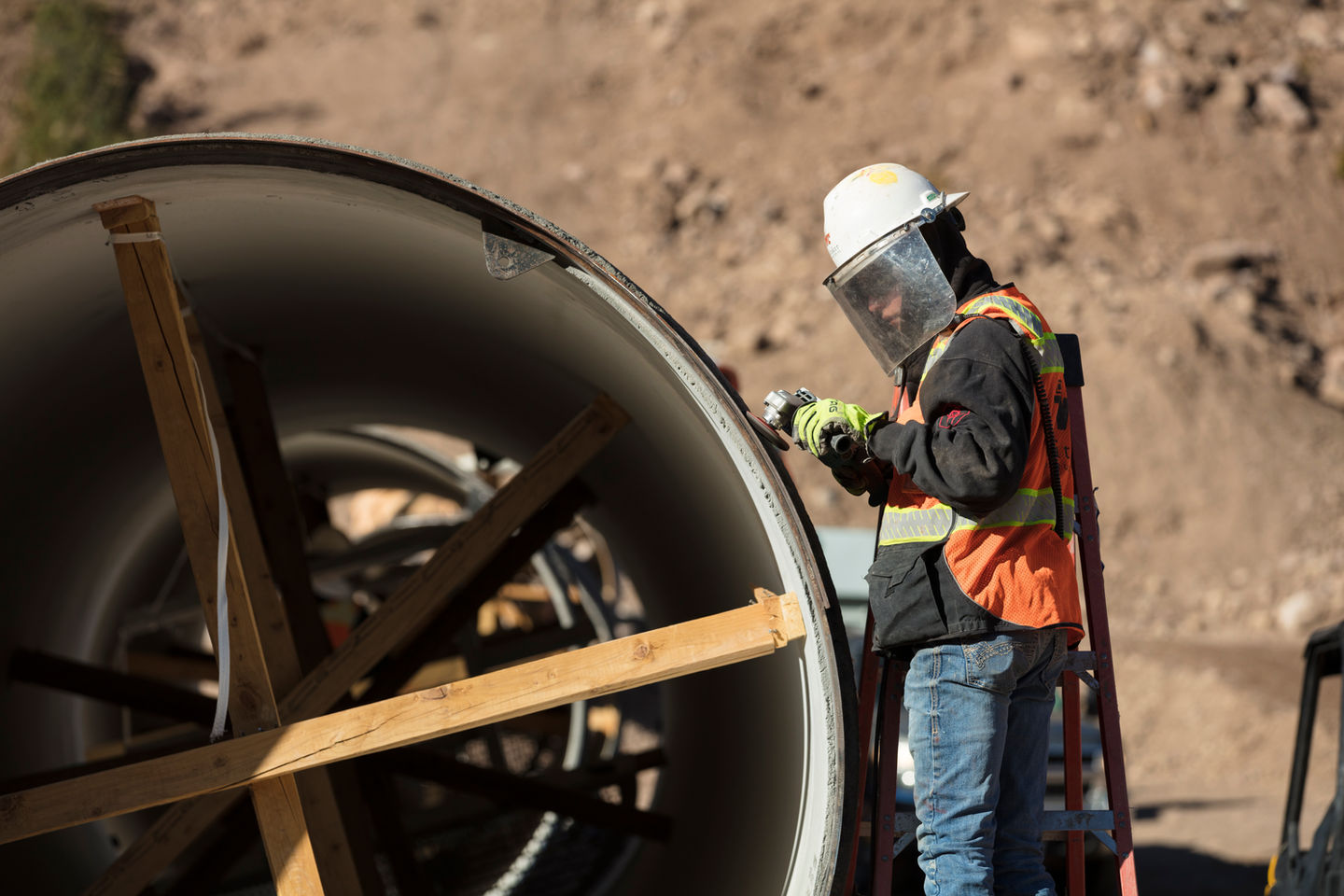
North Fork Siphon
Overall Utility Infrastructure
Project of 2020
Replacing the more than 30-year-old North Fork Siphon for Central Utah Water Conservancy District (CUWCD) is certainly one of the more complicated infrastructure projects Whitaker Construction has undertaken in recent memory, one that started in Spring 2018 and will span 3.5 construction seasons, with final completion in July 2021. The new siphon is an 84-inch concrete lined and coated welded steel pipeline approximately one mile in length and will replace an existing 72-inch pre-stressed concrete pipeline. Sections of pipe (manufactured by Northwest Pipe of Adelanto, Calif.) average 40 ft. in length and weigh a beefy 42,000 lbs. a-piece.
Whitaker Construction has long been heralded for its innovative approach to challenging
construction projects and North Fork Siphon is no different as evidenced by our
investment of more than a million dollars ($1.2 million) in a revolutionary cable crane
system manufactured by Austrian-based LCS, the first time its system has been utilized
in the U.S.
“We had done quite a bit of research on it…and when North Fork came up we reached out
and put (LCS) on our proposal (team),” Judd Hamson. “It’s a more efficient way
to move pipe and materials up and down the mountain. It was a (less expensive)
construction method vs. more conventional methods, such as building switchbacks
and putting cranes on the mountain.”
The original 72-inch pipeline was installed from 1986-88 by Harrison Western, which utilized a rail and carriage system to move pipe via a winch and pipe carrier. The LCS cable crane system was an attractive option to the owner all the way around.
The North Fork Siphon is the main pipeline (gravity flow) from the south slope of the Uinta Mountains, a key aspect of the Strawberry Aqueduct and Collection System. It carries water from Upper Stillwater Reservoir, down the east slope about 700 ft., across the bottom of the canyon and under the Duchesne River, and back up the Hades slope, before ultimately dumping into Strawberry.
Carrying approximately 285 cu ft per second (cfs) of water from the Stillwater Tunnel, the siphon descends 700 ft down a 55-degree grade to the floor of a mountain valley bisected by the North Fork of the Duchesne River. The siphon runs 1,500 ft across the valley floor, under the river, and takes on an additional 30 cfs of water from a diversion 2.5 miles upstream on Hades Creek.
"Some of our guys had seen one [a cable crane] working before and felt like it
could be a good solution for this project"
-Quinn Hamson, Whitaker Construction, Project Manager
The cable crane has much less impact on the environment. Other proposals had plans to cut new switchback roads up the hill. There is also a major safety issue because it can get very muddy, and unpaved roads like that can get very slippery. This very steep slope requires some out-of-the-box thinking to traverse and perform work on.
The $1.5-million piece of equipment from Gantner, Based in Sulz, Austria, consists of two 80-ft-tall towers and spools of cable that can span up to 2,000 ft. A diesel-powered winch at the top moves material up or down the slope while a separate diesel-powered winch mounted on the cable, lifts and lowers material. Capable of carrying up to 22 tons, the cable crane system transports 40 foot long 89-in.-dia steel-reinforced concrete pipe segments and aids in setting them in place. This replacement pipe is estimated to last 75 to 100 years, which is significantly longer than the PCCP (prestressed concrete cylinder pipe) that was placed in the late '80s.
An innovative cable crane system from Austria – with the capacity of lifting 44,000 lbs. – is being utilized to efficiently and safely place each 40 ft. section of concrete-lined and coated welded steel 84 in. pipe of this 1.1-mile-long pipeline in the rugged Uintah Mountains







.jpg)















%20BTB%20Sticker.png)